Executive Summary
Technology is transforming treasury operations across industries, driving efficiencies, reducing risks, and enabling organizations to make informed, data-driven decisions. In this whitepaper, we explore how technological innovations are reshaping treasury management functions, including cash management, liquidity forecasting, payments processing, and risk management. We provide an overview of the essential technologies, best practices for integrating them into treasury functions, and their impact on improving operational efficiency and financial performance.
Introduction
Treasury departments have traditionally been central to managing an organization’s financial health, overseeing key functions like cash management, liquidity optimization, foreign exchange risk mitigation, and financial planning. However, as business environments become increasingly complex and fast-paced, the demands on treasury operations are growing.
Technology has emerged as a critical enabler for modernizing treasury operations. Today’s treasury teams are leveraging advanced technologies to streamline processes, mitigate risks, optimize decision-making, and stay ahead of industry challenges. From automation and real-time data to artificial intelligence (AI) and blockchain, technology is reshaping how treasury functions operate.
This whitepaper outlines the pivotal role of technology in modern treasury operations and how businesses can harness it for improved financial management.
1. The Evolving Role of Treasury in the Digital Age
In the past, treasury functions focused on traditional tasks such as cash management, funding, and liquidity planning. Today, however, the role of treasury has evolved to become more strategic. Treasury teams are increasingly involved in business growth and sustainability initiatives, requiring them to adopt digital tools to handle increasing volumes of data, enhance forecasting accuracy, and manage cross-functional risks.
The key drivers of this evolution include:
- The globalization of business operations.
- Increased regulatory complexity.
- The need for real-time financial insights.
- Rising demand for operational efficiency.
These challenges have led treasury departments to embrace technology, enhancing their ability to manage risk, improve liquidity, and provide decision-makers with timely and accurate financial data.
2. Key Technologies Reshaping Treasury Operations
Several technologies are making a profound impact on treasury operations. These technologies are not just improving efficiency but are also enabling treasury departments to take a more strategic role within organizations.
a. Treasury Management Systems (TMS)
A Treasury Management System (TMS) serves as the backbone of modern treasury operations, integrating various financial management functions in a single platform. TMS software streamlines tasks such as cash management, payments processing, bank account reconciliation, and liquidity forecasting.
Benefits:
- Centralized management of cash positions.
- Real-time visibility into liquidity across multiple accounts and regions.
- Automated processes for reducing manual intervention and errors.
- Enhanced reporting and compliance capabilities.
Best Practice: When selecting a TMS, businesses should ensure the platform integrates seamlessly with their existing Enterprise Resource Planning (ERP) system and provides real-time data access for informed decision-making.
b. Automation and Robotic Process Automation (RPA)
Automation technologies, particularly Robotic Process Automation (RPA), are helping treasury departments reduce manual tasks and increase operational efficiency. RPA automates routine tasks such as data entry, bank reconciliation, report generation, and payment processing.
Benefits:
- Increased efficiency and accuracy by reducing human error.
- Freeing up treasury professionals to focus on more strategic tasks.
- Lower operational costs and improved scalability.
Best Practice: Implement RPA to handle high-volume, low-complexity tasks, ensuring that treasury professionals can concentrate on high-value activities such as liquidity forecasting and risk management.
c. Cloud Computing
Cloud-based treasury solutions offer scalability, flexibility, and cost-effectiveness. Cloud platforms enable real-time access to treasury systems and data from anywhere, promoting collaboration and faster decision-making.
Benefits:
- Enhanced access to real-time data for better decision-making.
- Reduced IT infrastructure costs and improved security.
- Seamless integration with other business systems and departments.
Best Practice: When transitioning to cloud solutions, ensure robust data security protocols and compliance with regulatory standards to safeguard sensitive financial data.
d. Artificial Intelligence (AI) and Machine Learning (ML)
AI and machine learning technologies are transforming how treasury functions manage data and make decisions. AI enables predictive analytics for cash forecasting, risk management, and financial planning, while ML helps optimize algorithms for more accurate liquidity predictions and currency hedging strategies.
Benefits:
- More accurate cashflow forecasting and liquidity management.
- Automation of complex tasks like risk assessment and financial analysis.
- Improved decision-making through data-driven insights.
Best Practice: Leverage AI and ML for advanced data analytics and real-time insights, enabling the treasury to make proactive decisions that align with corporate strategy.
e. Blockchain Technology
Blockchain technology is reshaping financial transactions by offering a secure, transparent, and efficient way to manage payments, settlements, and contract execution. Blockchain can streamline payment processes and reduce fraud and counterparty risk in treasury operations.
Benefits:
- Faster and more secure cross-border payments.
- Greater transparency in financial transactions.
- Reduced risk of fraud and errors in payment processing.
Best Practice: Explore the integration of blockchain with payment systems to optimize transaction speed and security while minimizing costs associated with intermediaries.
3. Benefits of Technology in Treasury Operations
By integrating the right technologies into treasury functions, organizations can achieve numerous benefits:
a. Enhanced Efficiency and Cost Savings
Automation and real-time data processing significantly reduce manual intervention, saving time and lowering operational costs. Treasury teams can focus on higher-value tasks, driving efficiency across the organization.
b. Improved Liquidity Management
With the ability to monitor cash positions across multiple regions and bank accounts in real-time, treasury departments can optimize liquidity management, reduce idle cash, and ensure that funds are allocated efficiently.
c. Better Risk Management
Technology enables treasury teams to better identify, measure, and mitigate financial risks. With advanced data analytics, AI-powered tools, and blockchain for secure transactions, businesses can more effectively manage market, credit, and operational risks.
d. Real-Time Financial Insights
Treasury teams can access real-time data and insights that enable faster, informed decision-making. This is crucial for responding to market changes, improving forecasting accuracy, and ensuring that liquidity is readily available for business needs.
4. Overcoming Implementation Challenges
While the benefits of technology in treasury operations are clear, businesses may face challenges when implementing new technologies. These challenges include:
- Integration with Existing Systems: Ensuring that new technologies integrate seamlessly with legacy systems can be complex.
- Data Security and Compliance: Protecting sensitive financial data is critical when adopting new technologies, especially with cloud-based solutions and blockchain.
- Change Management: Shifting to new systems requires training, support, and buy-in from treasury teams to maximize the effectiveness of new tools.
Best Practice: Take a phased approach to technology implementation, ensuring proper testing, training, and support at each stage.
5. The Future of Technology in Treasury Operations
As technological advancements continue, the future of treasury management will likely see further innovations in areas such as AI, blockchain, and quantum computing. Additionally, the ongoing rise of digital currencies and decentralized finance (DeFi) will present new opportunities and challenges for treasury teams to navigate.
To stay competitive, organizations must remain agile and open to adopting emerging technologies that can further streamline operations, reduce risks, and drive growth.
Conclusion
Technology plays a pivotal role in the modernization of treasury operations, enabling businesses to manage cash, risk, and liquidity with greater precision and efficiency. By adopting the right technologies, such as TMS, RPA, AI, and blockchain, organizations can optimize their treasury functions and contribute to long-term financial success.
Embracing technology not only improves day-to-day operations but also helps treasurers take a more strategic role in shaping the company’s financial future. The key to success lies in selecting the right tools, integrating them effectively, and continuously adapting to evolving technological landscapes.
Call to Action
To unlock the full potential of technology in treasury management, businesses should start by assessing their current systems and exploring how advanced technologies can improve efficiency, risk management, and forecasting accuracy. Investing in technology is no longer a choice but a necessity for businesses aiming to thrive in a rapidly changing financial environment.


